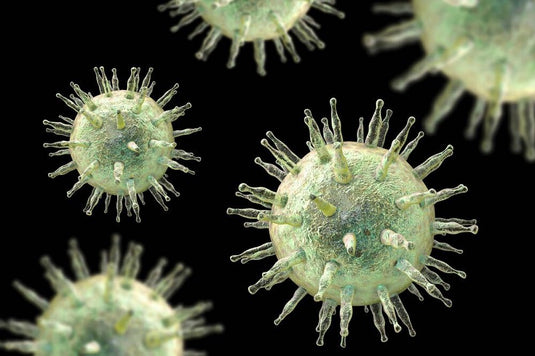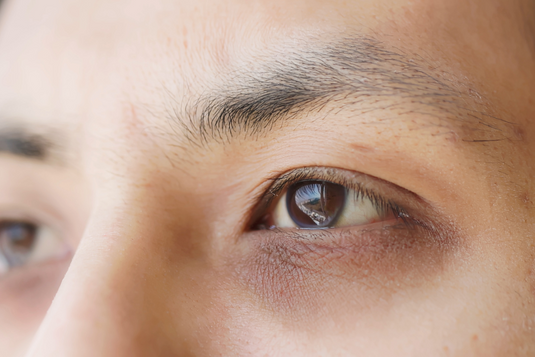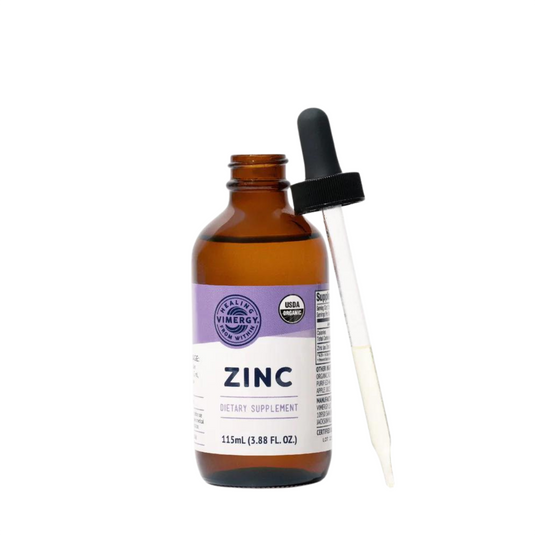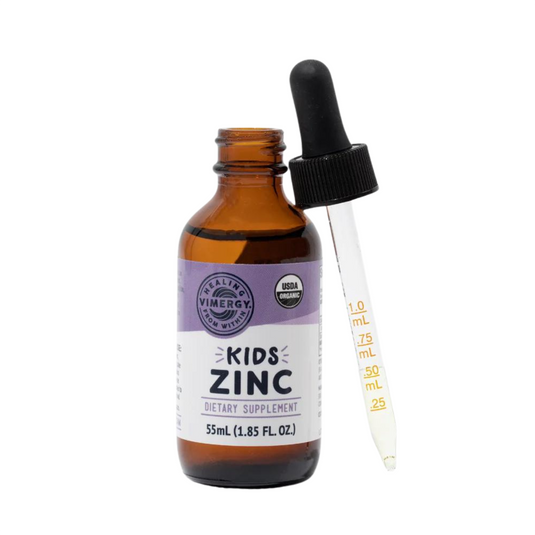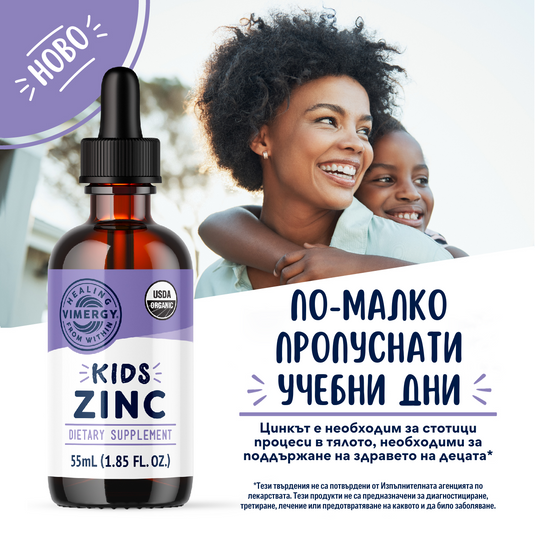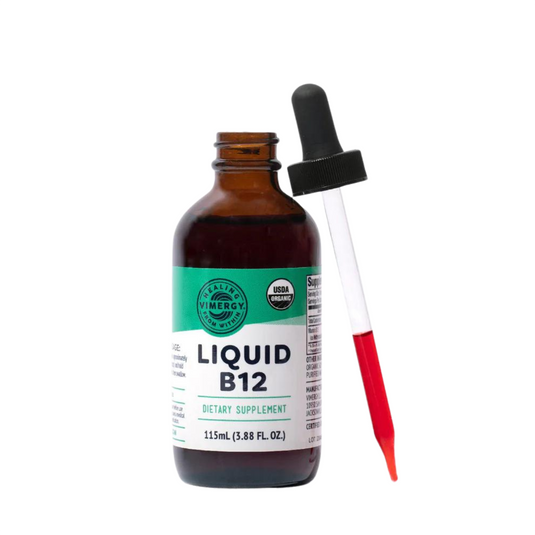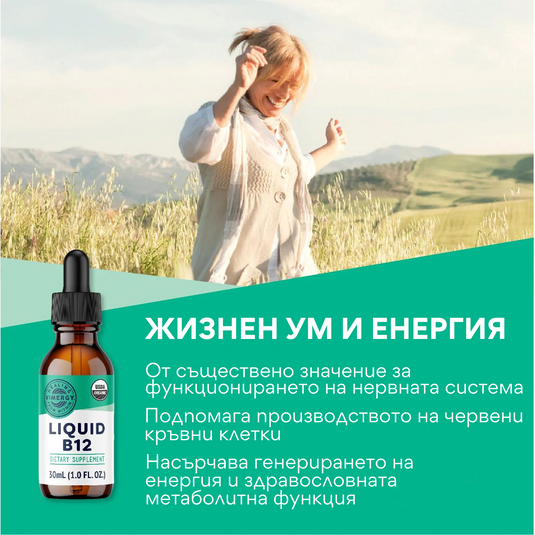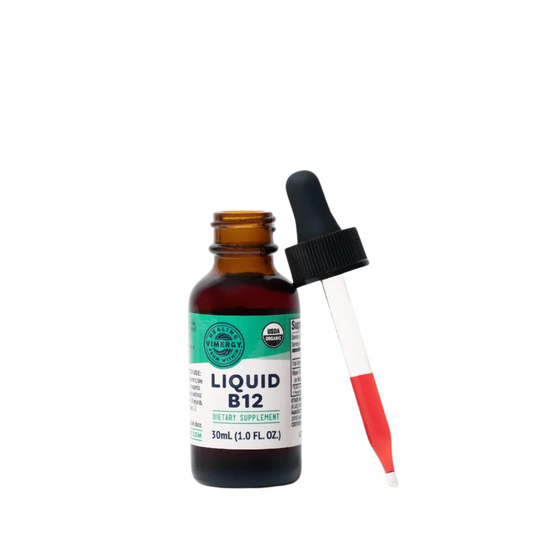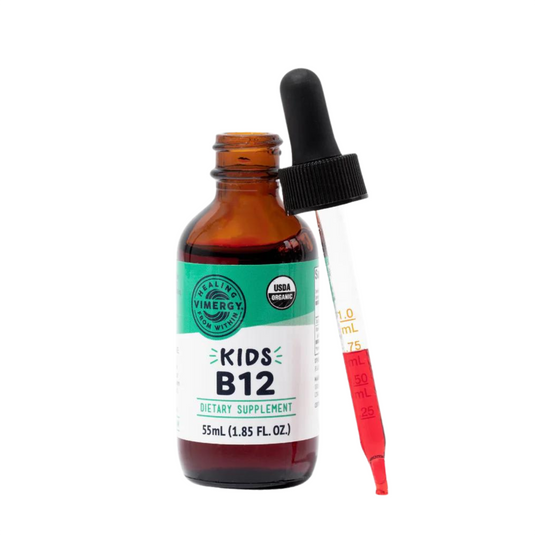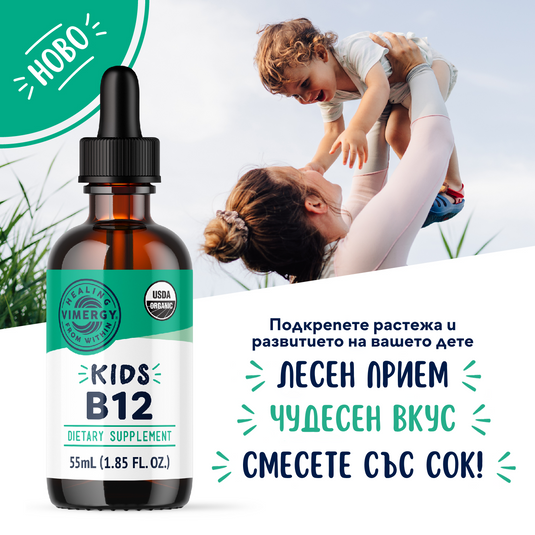Epstein-Barr virus (EBV) has become a hidden epidemic. Today, the majority of the world's population lives with one or more of the many mutations of this virus.
The Epstein-Barr virus is responsible for symptoms, conditions, disorders and diseases of all categories. In some people, it causes fatigue and pain that is attributed to Lyme disease or remains unexplained. In others, symptoms lead doctors to prescribe ineffective treatments such as hormone replacement therapy. A huge number of people with EBV are misdiagnosed and think they have something else.
Among the reasons for this EBV boom is the fact that very little is known about the virus. Medical research and science know only one of its varieties, and there are actually more than 60 of them. EBV is behind some of the most debilitating diseases that baffle doctors. As made clear in the introduction, it is the most inexplicable of all inexplicable diseases.
Scientists have no idea what damage it does in the long run and how many problems it can cause. The truth is that this virus is the source of countless health problems that are now considered autoimmune, such as fibromyalgia and chronic fatigue syndrome, as well as some major diseases that medicine thinks it knows but actually doesn't - like thyroid diseases, lupus, vertigo (dizziness) and tinnitus (ringing in the ears).
In this article, we'll explain when the Epstein-Barr virus originated, how it's transmitted, what unimaginable havoc it wreaks in its various strategic stages that no one has heard of, and we'll also (for the first time) reveal the steps you can take to defeat it. destroy and regain health.
Origin and spread of the Epstein-Barr virus
The Epstein-Barr virus was discovered in 1964 by two brilliant scientists, but in practice it appeared almost half a century before that, at the beginning of the 20th century. Its original varieties, which are still found, develop relatively slowly and produce noticeable symptoms only when a person enters old age. But even then, these symptoms are almost harmless. There are still people who carry these early non-aggressive strains of EBV.
Unfortunately, over the decades, EBV has evolved, and each new generation is more destructive than the last.
Until the publication of the book "The Healing Medium" by Anthony William, people with EBV suffered from the virus for the rest of their lives. Doctors rarely recognize EBV as the cause of the many health problems it causes, and even when they do, they don't know how to treat it.
There are many ways to get EBV. For example, you might catch it as a baby if one of your parents is a carrier. You may be given an infected blood transfusion. Hospitals don't test for the virus, so any blood transfusion puts you at risk. You can catch it even when eating out! The reason is that chefs are always in a hurry to prepare the dishes quickly, they often end up cutting themselves, then stick some band-aid on the wound and continue working. So their blood can end up in your food... and if they happen to have EBV in the contagious phase, they can pass it on to you.
Transmission of the virus also occurs through the exchange of other bodily fluids, for example during sex. In some cases, even a kiss is enough. Keep this in mind if you're looking for a partner to spend your life with – you'll almost certainly encounter various pathogens, such as EBV, as you go through this period.
Even if you already have EBV, you can pick up new, different strains of the virus. You can even heal and get over the EBV you already have, then get another strain of EBV, develop symptoms, and think it's the original problem that's come back. If this happens to you, the information in the book "The Healing Medium" will always be at your disposal.
Everyone has pathogens. One way or another, the people you come into contact with have one or more pathogenic organisms living in them. As careful as we are to protect ourselves and our families—and we should be careful—we don't always have complete control over the transmission of pathogens. This is one of the natural laws of nature. That's why it's key to have the tools you need to protect yourself and move forward.
Carriers of the virus are not the source of infection all the time. EBV spreads mostly when it is in its second phase. This raises the question of something else that was not known until now, namely that the development of EBV goes through four phases.
First phase of EBV
If you contract EBV, the virus initially goes through a latent period where it just floats in the blood and slowly replicates, waiting for an opportunity to manifest itself in a more direct infection.
For example, if you physically exhaust yourself for weeks without giving yourself a chance to fully recover, or deprive your body of essential nutrients like zinc or vitamin B12 , or experience a painful breakup or death of a loved one, the virus will detect the presence of stress-induced adrenaline in your body, which can lower your immune system and allow the virus to attack.
EBV can also often be activated when you naturally go through immune system changes related to hormonal changes. During menstruation, the focus is on the reproductive system, with 80% of the immune defense devoted to this and only 20% of it left to monitor the rest of the body. During ovulation, 40% of the immune system watches over the reproductive system, leaving 60% to take care of the rest of the body. And during pregnancy, 50% of the immune system takes care of the reproductive system and the baby, while the other 50% takes care of the rest of the body. These moments of change can lead to the opportunity for EBV to develop in the first stage.
During childbirth, over 90% of a woman's immune system is directed towards the reproductive system, leaving less than 10% of her natural defenses for the rest of the body during this period. (After giving birth, this ratio changes over the next three days as a woman's immune system shifts its focus around breast milk and begins to rebalance throughout the body.) After giving birth, some women may experience a variety of symptoms, including fatigue, brain fog , aches and depression. Symptoms can last for months and often lead to the common term postpartum depression. It is a huge advance for women that this condition is now more widely recognized and that postpartum challenges are being talked about more widely and openly. We must also be aware that there is more going on beneath the surface. Reactivated EBV is the common cause of postpartum symptoms. In addition to the change in the immune system at birth, there is also the release of an exhausting level of adrenaline. This big rush of adrenaline can be a food source for EBV, especially if the birth was difficult.
EBV is extremely patient. Depending on various factors, the first phase, in which he consolidates and waits for the ideal opportunity to manifest, can take weeks, months, or even more than a decade. Note that any of the conditions listed above can also cause EBV already in the body to progress to the next phase, which you will read about later in the article.
The virus is particularly vulnerable in this first phase, but because it doesn't cause any symptoms, it can't be detected by tests and a person usually doesn't know they're a carrier.
Second phase of EBV
At the end of the first phase, EBV is ready to attack your body. That's when it first makes its presence known... by turning into mononucleosis. It's the infamous "kissing disease" that thousands of college kids contract each year while pulling an all-nighter from studying.
Modern medicine is not aware that every case of mononucleosis is only the second phase of Epstein-Barr.
This is the most contagious phase of the virus. It is therefore advisable to avoid contact with blood, saliva and other body fluids with a person suffering from mononucleosis... and also not to put others at risk if you yourself suffer from this disease.
In the second phase of the development of the virus, the body begins to fight it. It sends out cells that "identify" the virus as an invader by attaching a certain type of hormone to it. It then sends soldier cells to seek out and destroy the tagged pathogens. Thus, the powerful immune system is mobilized in your defense.
How hard this battle will be depends on the person himself, as well as on the strain of EBV with which he is infected. Some may have a slight deficiency of zinc , while others may have an acute deficiency of this mineral. These differences are of great importance. Someone may already have a weakened immune system from other pathogens that she has already encountered or is keeping in check. (For example: Helicobacter pylori, streptococci , staphylococci, herpes zoster , Escherichia coli, human papillomavirus (HPV) and many other different pathogens). Someone may be facing a highly emotional period that causes extreme emotional states and the release of very corrosive adrenaline, pushing the nervous and immune systems to the brink. Addiction to caffeine, which puts a lot of strain on the immune system, can weaken its immune responses. The range of viral activity in different people can be explained as simply as the foods in their diet. For example, eggs feed viruses, so they are like a catalyst for EBV. If one person eats eggs regularly and another rarely consumes them, this can be of great importance. Your mononucleosis may only last a week or two and be accompanied by a mild sore throat and fatigue. In this case, you will hardly realize what is happening, and most likely you will not go to the doctor for a blood test.
Then you're struck again by fatigue, sore throat, fever, headache, rashes, and other symptoms that last for several months. Then you already go to the doctor who does a blood test - and the Epstein-Barr virus manifests itself in the form of mononucleosis... in most cases.
In this phase, the virus is already preparing to inflict long-term damage on one or more of the vital organs - usually the liver and/or spleen. This virus likes to settle where mercury, dioxins and other toxins are usually deposited, which is an ideal environment for it.
Another secret about EBV is that its best friend is strep bacteria . In this case, your body is fighting not only the virus, but also them; and this further confuses the immune system because the bacteria cause additional symptoms. They are the number one cofactor of the Epstein-Barr virus.
In the second phase of EBV, strep can cause a sore throat and/or infect the sinuses, nose, or mouth. They can also descend further down, to the urinary tract; the vagina, kidneys or bladder... and eventually cause cystitis.
Third phase of EBV
Once it settles in the liver, spleen and/or other organs, the virus takes up residence there.
From that point on, when the doctor runs an EBV test, he finds the presence of antibodies that he believes are evidence of a past infection dating back to when EBV was in the mononucleosis phase. The doctor will not detect traces of active EBV in your blood. And he will make one of the worst mistakes in the history of medicine: he will let the virus pass between the drops. If you haven't followed the steps to eradicate it that Anthony William lays out in his book The Healing Medium , the virus is effectively still alive and causing new symptoms...continuing to elude testing. The reason for this is that it already lives in the liver, spleen or other organs, and no tests have yet been invented to detect it there.
And because the virus remains undetected in your organs, the body decides it has won the war against it and destroyed the invader. Your immune system is back to normal, your mononucleosis is gone, and your doctor says you're healthy.
Unfortunately, the Epstein-Barr virus is just beginning its journey through your body.
If you've contracted the typical variety, EBV can lie dormant for years—perhaps decades—without you ever knowing about it. However, in cases of a particularly aggressive strain, EBV can cause you serious problems even as it reproduces.
For example, it can lodge deep in the liver and spleen, causing inflammation and enlargement of these organs. Once again, I emphasize that the doctor will not make a connection between the fact that you were infected with EBV and the current activity in the organs. Now having this information, doctors are beginning to pay attention to the fact that there is post-mononucleosis activity that creates new symptoms.
In addition, the virus creates three types of poison:
- EBV releases a toxic waste material or viral byproduct. This is extremely important, because as it reproduces, it increases the number of its army, begins to feed more intensively, and hence the amount of toxic by-product released by it also increases. This waste material is often identified as spirochetes, which in turn can test positive for Lyme disease and thus lead to a misdiagnosis.
- When the virus-cell ceases to exist - which happens often, since its life cycle lasts 6 weeks - its remains are also toxic and become an additional burden on the body. Add to the picture the viral byproduct of the growing army of EBV, and the situation worsens and fatigue sets in as a result.
- The poison that EBV creates through these two processes has the ability to generate a neurotoxin, a poison that disrupts nerve function and confuses the immune system. This specific toxin is released at strategic times during the third phase and constantly during the fourth and prevents the immune system from detecting and attacking the virus.
As a result of an aggressive strain of EBV taking root in one of your organs, the following problems can occur:
- The liver begins to work at such low speeds that it cannot remove toxins from the body. A sluggish liver affects almost everyone today. It is extremely important to understand how to properly maintain your liver. Anthony William shares exactly how to do this in The Healing Medium: Help for the Liver .
- Hepatitis C (actually, EBV is the main cause of hepatitis C. For more information on how this condition develops, you can read in "The Healing Medium: Help for the Liver" )
- Sluggish liver activity leads to lower levels of hydrochloric (hydrochloric) acid in the stomach, and hence to poisoning of the stomach environment. Thus, some foods remain incompletely digested and begin to rot in the digestive tract, causing bloating and gas and/or constipation. Overloading the liver can also lead to a decrease in bile reserves, causing fats in food to stop being broken down or broken down, causing them to go rancid.
- The ground is being prepared for the development of endometriosis, PCOS (Polycystic Ovary Syndrome), fibroids, ovarian cysts or an enlarged prostate.
- You become sensitive to foods that have never caused you problems before. It occurs when the virus consumes foods it likes - for example, cheese, which it transforms into a mass unrecognizable to the body.
- The virus tames itself until it senses the presence of stress hormones, indicating that you are in a particularly vulnerable state, for example after complete physical exhaustion, a severe emotional blow or a sudden shock (such as a car accident), or when it senses a sudden hormonal change in the body, such as occurs during pregnancy and menopause.
Sensing that it's time to manifest, it begins to release a neurotoxin and further complicates the work of the body, which is already struggling to deal with the byproduct of EBV and dead cells. All these poisons end up alarming the immune system and at the same time confusing it because it has no idea where they came from.
It is important to emphasize that in order for the virus to start growing, it means that you most likely encountered a viral catalyst very recently or within a period of up to several months. Examples include the kinds of challenges we have just discussed: highly stressful events, difficult circumstances, emotional states such as heartbreak or betrayal, physical trials such as childbirth. It also happens when the immune system is lowered due to ongoing deficiencies of certain minerals or certain foods in your diet that are more virus-stimulating than antiviral. Even vices such as excessive caffeine from common beverages adversely affect the adrenal glands and liver. Other triggers may include exposure to molds; air fresheners, scented candles, cologne or perfume; treatment of lawns with chemicals; removal of mercury amalgam dental fillings; exposure to pesticides or herbicides; or exposure to additional pathogens, such as COVID or influenza . This is not an exhaustive list of the triggers that, when they appear in a person's life, can start the next phase of EBV, but only some of the common ones. All of these triggers have the potential to reduce the immune system temporarily.
Lupus
The immune system reaction I just described manifests itself in unexplained symptoms that doctors diagnose as lupus. What the medical community doesn't realize is that lupus is simply the body's way of reacting to the neurotoxins and EBV byproduct. It is the body's allergic reaction to neurotoxins that increases the levels of inflammatory markers that doctors use to identify and diagnose lupus. Lupus is actually just an Epstein-Barr virus infection.
Hypothyroidism and other thyroid disorders
While the immune system wonders what is going on, EBV takes advantage of the chaos, leaves the organs it has taken up residence in, and chooses another target - in this case, the thyroid gland!
Modern medicine still does not know that EBV is the real cause of most thyroid disorders and diseases - most notably Hashimoto's disease, but also Graves' disease, thyroid cancer and other thyroid diseases. (Thyroid disease sometimes occurs as a result of radiation exposure, but EBV is the main culprit in 95% of cases.) Medical research has not yet discovered the true cause of thyroid disorders, and is unlikely to for decades to come. that this is actually EBV. If your doctor diagnoses you with Hashimoto's, it really means that he or she doesn't know what's wrong with you. The claim that your body is attacking your thyroid gland is wrong. In practice, not the body, but EBV attacks the gland.
Once inside the thyroid gland, EBV begins to burrow into its tissue. The viral particles literally twist and turn like drills to penetrate deep into the thyroid tissue, killing its cells and injuring the organ. Thus, EBV gives rise to various forms - from very mild to extremely severe - of hidden hypothyroidism, from which millions of women worldwide suffer. Your immune system notices this and tries to intervene by causing inflammation, but the neurotoxins and byproduct of EBV, as well as the toxic dead cells, confuse it and it cannot identify the threat that actually comes from the virus hidden in the thyroid gland.
Even if this sounds worrisome to you, fear not: the thyroid gland has the ability to renew itself and heal itself when you give it what it needs. And never, ever underestimate the power of your immune system, which by the end of this chapter will be activated by the very fact that you have learned the truth.
The immune system's backup option for dealing with the virus in the thyroid is by encapsulating it in nodules that deposit calcium salts. However, this does not affect EBV. First, most of the virus cells manage to avoid the attack and remain at large. Second, the encapsulated cells usually stay alive and make themselves comfortable in the calcium shell, where they continue to feed on the thyroid tissue, draining it of energy. Sometimes they even turn their prison into a living entity called a cyst, which further stresses the thyroid gland.
Meanwhile, the immune system's attacks on EBV can harm you if you don't eat enough calcium-rich foods. It happens that if the immune system can't get calcium to encapsulate the virus from the blood, it pulls it from your bones, which can lead to osteoporosis.
At the same time, the hundreds of virus cells that are encapsulated in nodules can weaken the thyroid gland and reduce the effective production of vital hormones. The lack of natural thyroid hormones combined with the toxins released by EBV can lead to weight gain, fatigue, clouded thinking, memory loss, depression, hair loss, insomnia, brittle nails, muscle weakness and/or a number of other symptoms.
Some rare and particularly aggressive forms of EBV go even further. They can lead to thyroid cancer. The number of cases of this type of cancer in the United States is rising rapidly. Modern medicine does not know that the cause of this is the rare, aggressive varieties of EBV.
The Epstein-Barr virus attacks the thyroid gland with a strategic goal: to cause confusion and stress in the endocrine system. Pressure on the adrenal glands leads to increased production of adrenaline - a favorite food of EBV. Not all mixtures of adrenaline produced by the adrenal glands will fuel EBV for short periods. In fact, the long-term condition of your thyroid may prompt your adrenal glands to release extra adrenaline to compensate over a long period of time. This ultimately puts the adrenal glands in a more unbalanced, sensitive state as they are already being taxed by the stressful events and emotional upheavals of everyday life. Long-term stress drives the adrenals into extra flares and fits and inconsistency. An emotional disturbance or stressful event, even a small one, can shock the adrenal glands into their weakened state, prompting them to produce a more corrosive variety of adrenaline, normally reserved to help us survive moments of extreme emotional states.
Everyday normal, milder adrenaline mixes with these small bursts of more intense adrenaline mixtures, and because of its corrosive nature, this more intense adrenaline can penetrate deeper into the body tissue where the EBV has lodged. Everyday, milder adrenaline does not penetrate the tissues in this way and is unlikely to reach the EBV in its nesting sites such as the thyroid gland. It is the corrosive mixtures of adrenaline that can penetrate more easily throughout the body - even becoming easier for EBV to reach through the prison of thyroid nodules. These are also the mixtures from which EBV feeds and develops the most.
This is not always a necessary condition for EBV to become stronger. Foods like eggs act as a superfood for EBV, prompting it to expand and grow even sometimes more than the corrosive types of adrenaline. Comfort foods like cheese and gluten also fuel EBV.
Sometimes food and adrenaline together play an important role. When eating foods like eggs, dairy, and gluten, EBV has a greater chance of getting hold of the leftovers if emotional circumstances and corrosive adrenaline make the heart beat faster, pushing those food leftovers (and nutrients from other foods) through the bloodstream. - allowing EBV to be nourished, thereby strengthening and helping it to attack its ultimate target - the nervous system.
Fourth phase of EBV
The ultimate goal of the Epstein-Barr virus is to leave the thyroid gland and attack the central nervous system.
Normally, the immune system would not allow this to happen. But if EBV has managed to deplete you during the third phase, when it has taken up residence in the thyroid gland, and if you have experienced a sudden physical or emotional trauma in the meantime, the virus will take advantage of your vulnerability and start causing numerous strange symptoms - from palpitations and general pain to localized neuralgic pain.
It is common for a person to experience an accident, surgery, or other physical injury and then feel unwell for much longer than the injury in question suggests. People describe it as "like being hit by a truck."
In such cases, blood tests, X-rays and MRIs reveal nothing, and doctors do not understand that the virus is inflaming the nerves. Therefore, the fourth phase of EBV is the main source of unexplained diseases - those that cause mass confusion among doctors.
And in practice the following happens: your injured nerves release a hormone that "alarms" the body that the nerves are in danger and need to be restored. In its fourth phase, EBV detects the presence of the hormone in question and attacks the damaged nerves.
A nerve is like a thread of yarn with spikes: When a nerve is damaged, the spikes fall out of its myelin sheath. EBV looks for such loopholes and slips through them. If successful, the inflammation can last for years. As a result, a relatively minor injury can cause you chronic pain.
You do not need to have a physical injury to develop any of these neurological symptoms caused by EBV. The nerves can still become inflamed from the virus. Because the virus feeds on readily available toxins (such as mercury, aluminum, copper, and other toxic troublemakers, as well as foods such as eggs, milk, cheese, butter, and gluten), it can release neurotoxins that stick to nerves—regardless of whether root hairs, damaged nerves or even undamaged ones are found. This can cause different types of symptoms, with each variety of EBV causing each individual symptom in a slightly different way. A variety of EBV may have an appetite for more toxic food, such as mercury, or produce a more toxic neurotoxin that can inflame nerves just by touching them - without the nerves even being injured or torn.
Problems that occur as a result of the viral infection include muscle pain, joint pain, soft parts of the body, back, tinnitus and/or numbness in the hands and feet, migraine, constant fatigue, dizziness, blurred vision, insomnia, restless sleep and night sweats. Patients with such complaints are sometimes diagnosed with fibromyalgia, chronic fatigue syndrome or rheumatoid arthritis, all symptoms that the medical community admits they do not understand and for which they have no cure. In these cases, doctors prescribe the patient inappropriate treatment, which is not even addressed to the main culprit, because the unexplained diseases are actually the fourth phase of EBV.
One of the biggest mistakes of all time is to confuse EBV symptoms with premenopause or menopause. Symptoms such as hot flashes, night sweats, palpitations, vertigo, depression, hair loss and anxiety were and still are often misinterpreted as hormonal changes - thus the pernicious trend of using hormone replacement therapy (HRT) was born.
Let us now take a closer look at the chronic diseases that result from the fourth phase of EBV and have puzzled doctors for decades.
Chronic fatigue syndrome
Historically, medicine has long denied the fact that women's suffering has a real, physical cause. Like fibromyalgia sufferers (see below), women with chronic fatigue syndrome (CFS), also known as myelgic encephalomyelitis/chronic fatigue syndrome (ME/CFS), chronic fatigue syndrome and immune dysfunction (CSID), and systemic exercise intolerance disease (SED), are often called liars, lazy, cheaters and/or crazy. It is a disease that affects an awful lot of women.
And the chronic fatigue syndrome is only now starting to gain strength.
It's common for young female students to come home halfway through the semester, go to bed, and be unable to get out of bed. It's terrible at this tender age to catch chronic fatigue syndrome and watch your peers have relationships and jobs while you're not able to reach your full potential.
Women who develop CFS in their 30s, 40s, or 50s face serious problems because at that age they already have families and a social circle, as well as established responsibilities. They try to take care of everything and everyone, take on more responsibilities than they can handle, and CFS interferes with their normal daily life.
In addition to being withdrawn, they also suffer from the guilt and fear that usually accompany their misdiagnosis. I have no doubt that if you too suffer from CFS, it is not easy for you to hear, "But you look perfectly healthy." It's discouraging when you're not feeling well to hear from your doctors, friends and family that there's nothing wrong with you.
Chronic fatigue syndrome is very real. It is caused by the Epidyne-Barr virus.
As has already become clear, those affected by CFS have a high viral load of EBV, which methodically worsens the body's condition through the neurotoxin attacking the central nervous system. This leads to a weakening of the adrenal glands and digestive system and creates the feeling that "your batteries are dead".
Fibromyalgia
For over six decades, doctors denied that fibromyalgia was an actual health problem. Now, for the first time, they are admitting that it is a real condition.
However, the best explanation they give us is that fibromyalgia is an overactivity of the nerves, which basically translates to... we have no explanation for it. But the doctors are not to blame. They don't have a magic book that tells them what's causing their patients' pain and how to help them.
Medicine is years away from discovering the true cause of this disease, because it is caused by a virus and develops at the nerve level, and doctors still do not have the necessary equipment to detect it.
People suffering from fibromyalgia are subjected to an unusual, debilitating attack. It is caused by EBV, which affects both the central nervous system and nerves throughout the body, causing constant pain, sensitivity to touch, extreme fatigue and a host of other problems. The pain can shift and move around the body (something Anthony William calls rolling pain). Discomfort in certain areas in a given week may move to other parts of the body a week later. Or someone may live with constant fluctuations in pain, from mild to severe, that remain in the same areas.
One of the problems with fibromyalgia - one of many - is how everyday incidents and actions can lead to pain that feels much more acute and for a much longer period. Crashing into a door frame, for example, or bumping your foot into something while walking, or lifting something too heavy, or overexerting your body with exercise - these are often painful experiences that one would forget about in seconds , if he registers that type of pain at all. For fibromyalgia sufferers, the pain these incidents can cause is on a whole other level.
Tinnitus (ringing in the ears)
Tinnitus , also called noise or ringing in the ears, is usually caused by EBV entering a part of the inner ear called the cochlea. The ringing is the result of the inflammation and vibration of the cochlea and the auditory-vestibular nerve. Milder forms of tinnitus can also occur just from the neurotoxins themselves that the virus eliminates - when these neurotoxins collect around the labyrinth of inflamed nerves.
In tinnitus, external noises such as fans, air conditioners, and machinery in the distance can change the structure of a ringing or other sound in the ear, making it almost dance and change tones. It also tends to get worse at the end of the day and into the evening. Tinnitus can be very difficult for people, so it's best to make friends with it while you work on overcoming it. Many people notice that the more they rest and sleep, the more the tinnitus is reduced after waking up. This is because the more you rest, the more time the nerve canal in your inner ear has a chance to strengthen and repair itself. If you're not sleeping well, that doesn't mean you can't work on curing your tinnitus. Any time you manage to sleep (or, if you can't sleep, any time spent resting with your eyes closed) helps your body keep tinnitus symptoms under control.
Vertigo and Ménière's syndrome
Doctors often attribute vertigo and Ménière's syndrome to calcium crystals, or stones, that disintegrate in the ear. Most often, however, chronic cases of these diseases are actually caused by EBV, whose neurotoxin inflames the vagus (vagus) nerve.
This can lead to many varieties of vertigo, from feeling like you're standing on a moving boat to feeling like you're falling left, right or forward while walking, causing you to try to keep yourself from falling to the ground. Vertigo can be very mild, where you feel dizzy after turning your head very quickly, or find it difficult to watch someone or something else moving around you because the movement of something within your vision can make you feel slightly nauseous and even partially dizzy. More severe cases of vertigo can lead to an inability to get out of bed or, conversely, an inability to lie down in bed because as soon as you do, your head feels like it's spinning. Sometimes the rotation is circular, and sometimes it's a repetitive motion that goes through your eyes.
What type of vertigo you experience depends on where the neurotoxin or virus itself touches the vagus nerve. If the lower part of the vagus nerve is more inflamed, then nausea will accompany your vertigo. If the middle part of the vagus nerve is more inflamed, you will have a stronger sensation that you are on a boat or that the ground is moving beneath you when you stand or walk. If the upper part of the vagus nerve is inflamed, it sometimes leads to more severe vertigo - spinning of the head that makes it difficult to walk anywhere.
Other symptoms
Inflammation of the vagus nerve can also lead to anxiety, dizziness, tightness and pain in the chest, esophageal spasms, and asthma.
Insomnia and numbness in the hands and feet may be due to chronic inflammation of the phrenic nerve caused by EBV.
And palpitations can be the result of a build-up of dead cells and a byproduct of EBV in the heart's mitral valve. This causes the valve to stick, which can cause heart rhythm problems or unexplained pounding. Some strains of EBV can release a neurotoxin that increases inflammation in the brain, which can cause heart palpitations or even atrial fibrillation due to saturating certain neurons with neurotoxins that interrupt the signals sent from those neurons in the brain to the heart. This may fall into the category of mysterious electrical activity of the heart that baffles doctors.
If you are or suspect you are a carrier of EBV, the fourth phase of the virus can lead you to despair. Calm down. If you take the right steps - which the medical community does not yet know about and which I suggest at the end of this chapter - you can heal, restore your immune system, and regain normalcy and control over your life.
Types of EBV
As we have already said, there are over 60 varieties of the Epstein-Barr virus. Their number is so large because EBV has existed for over 100 years. Over generations it has evolved and mutated through various hybrid forms and strains. As people age, they become increasingly toxic, meaning their bodies bear the brunt of the increased exposure to toxic pests that accompany modern lifestyles. EBV has adapted to feed on this wide variety of toxins, including toxic heavy metals, pesticides, herbicides, fungicides and pharmaceuticals. Using these toxic pests as fuel sources, EBV spreads and mutates, with different mutations developing different powers and appetites along the way. Over the years, EBV has been challenged by different immune systems to adapt, some of which have been much stronger. As some strains of EBV have also become stronger, they have been able to spread. All of these strains fall into six groups based on the severity of the symptoms they cause, with approximately ten varieties of the virus in each group.
Below in the article we will look at these EBV groups in detail. First, it's important to remember that many people have more than one variety of EBV. Someone can have one strain of EBV from one group and 10 years later be exposed to another strain of EBV from a different group. Some people have two to three varieties of EBV. This means that a person often experiences symptoms from different groups of EBVs, regardless of whether these symptoms are mixed at the same time or occur at different times in their life. Keep this in mind as you read about EBV groups.
Also note that there are different varieties of EBV within each group. These different varieties have slightly different effects on the body, leading to differences in symptoms within a given group. For example, one strain of EBV may be slightly more aggressive than another in the same group, or have a different appetite for a particular toxin than another strain. This leads to differences in symptoms.
Any variety of EBV from any group can increase inflammation. EBV types 3 to 6 can lead to a misdiagnosis of Lyme disease if the doctor is looking for it. That's because EBV strains 3 through 6 can increase inflammation enough to cause false positives in tests for Lyme disease.
As we have said many times, even just knowing the cause of your illness can give you strength. Reading this chapter and realizing that your mysterious symptoms and conditions match the way EBV works can ease your fear and worry about what is happening to you. These descriptions of EBV groups can help you navigate the particular variety or varieties of EBV that have disrupted your life. Even if you can't determine which EBV group or groups you're dealing with, just realizing that it's EBV at all can help you gain a sense of peace over time. With this knowledge, you can take control and work on getting rid of the virus so you can recover instead of staying in the dark about why you're sick.
The first group includes the oldest and mildest forms of EBV. It takes them years, even decades, to move from one phase to another. The effects aren't felt until you're in your 70s or 80s, usually in the form of back pain and other minor ailments. The virus can stay in your organs and never reach the third or fourth stage of development. This group is becoming rarer by the day as the older generations of people pass away from this world. This group of EBV will most likely disappear within the next 30 years as newer mutations in younger people compete with these group 1 varieties.
Varieties in the second group of EBV pass from one to the next phase of development slightly faster than those in the first group. In this case, you may experience symptoms when you are in your 50s or 60s. These varieties of the virus can live in the thyroid gland and send some of the virus cells to slightly inflame the nerves. This in turn can lead to mild and/or intermittent versions of a number of different conditions and diagnoses, such as fibromyalgia, neuralgia, joint pain, tendonitis, carpal tunnel syndrome, aches and pains. This group also includes the only varieties of EBV known to the medical community.
The varieties of the third group pass from one phase to another more quickly than those of the second group, and their symptoms appear when a person is about 40 years old. They develop fully until the fourth phase, which means that they completely leave the thyroid gland and stick to the nerves. This group has an appetite for different toxins, so its neurotoxins are slightly different than the previous group. Viruses in this group can cause a number of illnesses, including joint pain, fatigue, palpitations, tinnitus and vertigo. Group 3 EBV strains can also cause diseases of the reproductive system. And if there are high enough levels of honey in a person's liver, some species of this group have the potential to feed on that honey and create dermatotoxins that underlie eczema and psoriasis. If there is enough aluminum in the liver, the species in this group have the ability to feed on that aluminum and create the dermatotoxins responsible for vitiligo.
Group 4 EBV strains cause noticeable problems quite early, as early as a person's early 30s. Their aggressive actions against nerve cells manifest as symptoms characteristic of fibromyalgia, chronic fatigue syndrome, brain fog , confusion, anxiety, mood swings, as well as all the symptoms caused by the varieties of EBV from the first three groups. Strains in this group can also cause PTSD symptoms even if the person has never experienced a traumatic injury.
Variants of EBV of the fifth group create tangible problems already in youth, when a person is about 20 years old. They are particularly unpleasant forms of the virus because they attack just at the time when the young person is about to start an independent life. They can cause all the problems characteristic of the fourth group of EBV and feed on negative emotions - such as fear and anxiety. To cause the most trouble, this group has to do with the toxic heavy metal mercury. Nowadays, young people actually tend to have higher levels of mercury in their organs than older generations, although it's easy to think that it should be the other way around. The EBV varieties in this group also tend to have a craving for eggs—mercury and eggs being their two favorite foods. This means that eliminating eggs from your diet and focusing on eliminating mercury are two ways to gain some control and work on improving the symptoms and conditions associated with this group of EBV. Doctors can find nothing wrong and perceive these young patients as perfectly healthy. They often tell them that "it's all in their head" and then send them to psychologists to convince them that what's happening in their body isn't actually real. Sometimes a patient comes across a Lyme-loving doctor and walks out of the doctor's office with the corresponding misdiagnosis. As the chronic disease epidemic becomes harder to deny with each passing year, a new trend is taking hold among younger doctors: "It's all in your head" is being replaced by "Your disease is real, but you're causing it." ". Some doctors even tell their patients, "You provoked your illness by bad thoughts," "bad thinking," or "you're not positive enough," or they'll imply that you're emotionally unstable and that's why you're sick. Or, many doctors, both alternative and conventional, will take your symptoms seriously...yet go off in the wrong direction of leaky gut, the microbiome, "dysfunctional" microflora, hormones, food sensitivities, or the overly simplistic "Maybe it's just your adrenals." No matter how well-intentioned these doctors are, they will not understand that the real problem is a low-grade viral infection unless they are doctors who have learned over the years from the information of the Healing Medium.
However, the worst varieties of EBV fall into the sixth group. They can seriously knock down even small children. In addition to all the symptoms that the fifth group of the virus causes, here the symptoms can be so severe that doctors misdiagnose them as leukemia, viral meningitis, lupus or other serious diseases. Some varieties of EBV in this group are responsible for causing symptoms that only resemble leukemia (or other serious conditions) and therefore lead to misdiagnosis.
It's a subtle difference on paper, but it won't seem so subtle to a person experiencing it. Here's the difference: A group 6 strain of EBV can cause a persistent viral infection that itself creates leukemia in children and adults. On the other hand, some of the other varieties of Group 6 EBV can cause acute viral infections that result in symptoms that look very similar to leukemia—without the condition itself being leukemia. Meanwhile, medical research and science do not realize that EBV is behind each of them, so diagnostic judgment can be clouded. Sometimes well-intentioned doctors are mistaken and make the diagnosis of "leukemia" too quickly, which changes the patient's life. They may accidentally mistake a child's severe case of mononucleosis caused by an aggressive strain of EBV (an acute viral infection) for leukemia (a long-term viral infection), not even realizing that it is all viral.
The diagnostic gray area is very similar in neurological conditions such as MS (Multiple Sclerosis) and ALS (Amyotrophic Lateral Sclerosis) . Keep in mind that you could be diagnosed with Lupus, ALS, or MS and not have one of the advanced strains of EBV group 6. You could be dealing with a milder strain of the virus; nowadays, even the mildest neurological symptoms can lead to a diagnosis, depending on the doctor's specialty. For example, although multiple sclerosis—the disease that damages the myelin sheath of nerves in the central nervous system—is caused by EBV, symptoms that resemble multiple sclerosis are also caused by it. For damage to the myelin sheath to occur, an advanced form of EBV must be present. However, in order to accelerate the development of the group 6 variety of EBV, it is necessary to have a higher level of toxic heavy metals such as mercury and aluminum. There are people with the mildest form of symptoms caused by milder varieties of EBV (not Group 6) who are misdiagnosed with MS when there is no real damage to the myelin sheath, just because of the way some doctors throw it around diagnoses. So both actual cases of MS and chronic symptoms misdiagnosed as MS are caused by EBV, with doctors not knowing that the real cause is EBV anyway unless they are familiar with the information of the Healing Medium.
Some strains of group 6 EBV can create a larger amount of stronger types of neurotoxins and dermatotoxins, which accounts for some of the conditions these strains can cause. This is largely due to the fact that some varieties of this group have an even greater appetite for toxic heavy metals such as mercury, aluminum and copper. Group 6 varieties also have a greater appetite for eggs, dairy and gluten. Their hunger for eggs especially suppresses the immune system because the immune system is constantly fighting the virus, using up its reserves to protect you, and anything that feeds EBV the way eggs do makes those fights harder. In addition, they suppress the immune system, which can lead to a wide range of symptoms, including rashes, weakness in the limbs and severe neuralgic pain.
In the continuation of this article - "Epstein-Barr virus (part two)" , you will find the following topics:
• EBV - complications from flu and covid-19;
• treatment of EBV;
• medicinal foods;
• medicinal herbs and nutritional supplements.
Information from the updated 2021 edition of the New York Times bestseller "The Healer Medium" was used , which has not yet been translated into Bulgarian.
